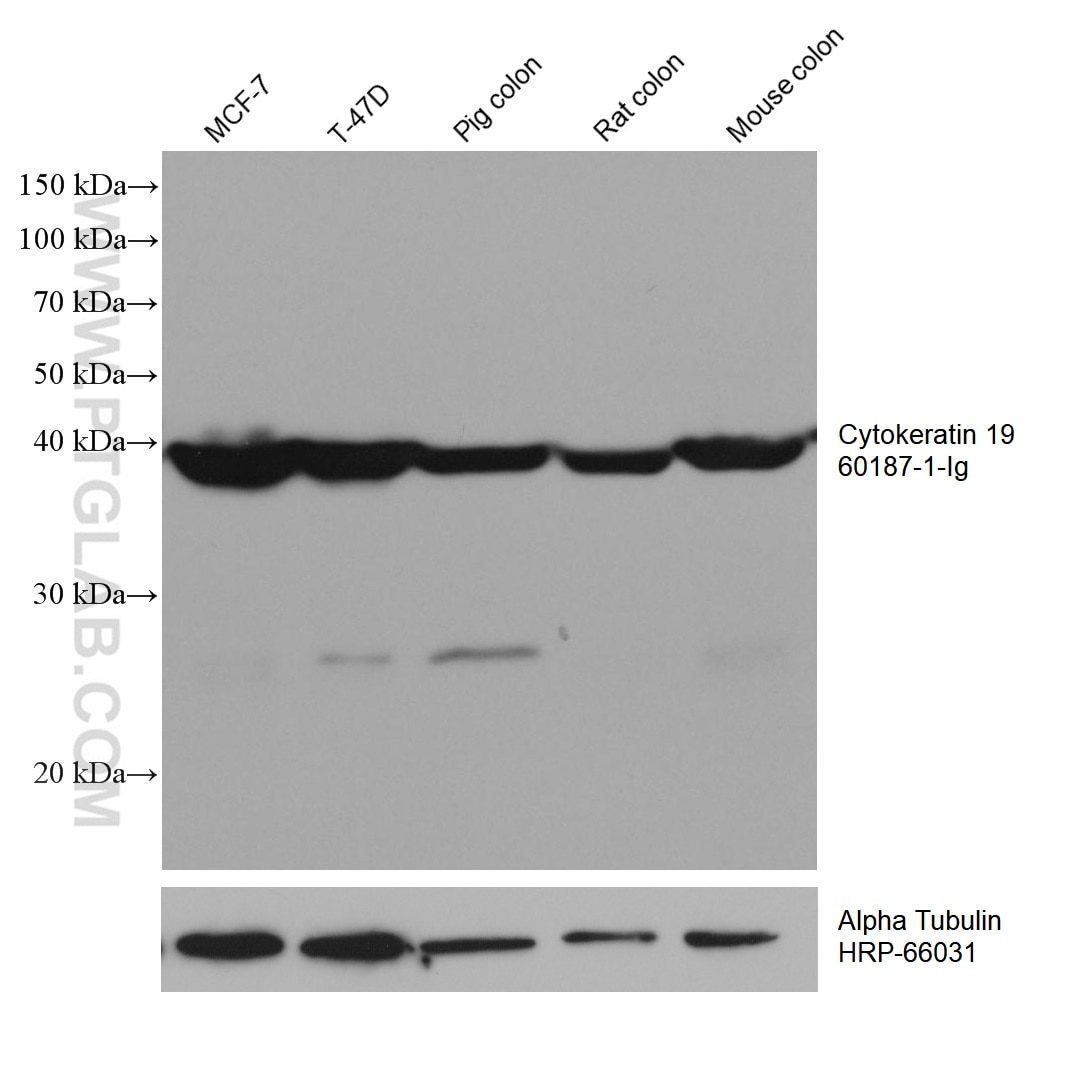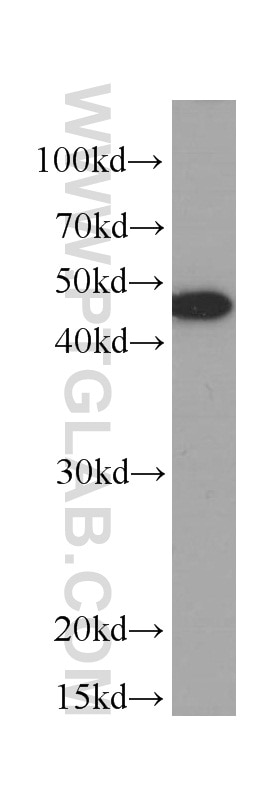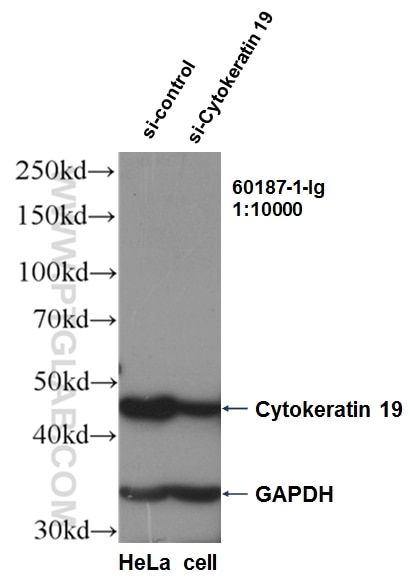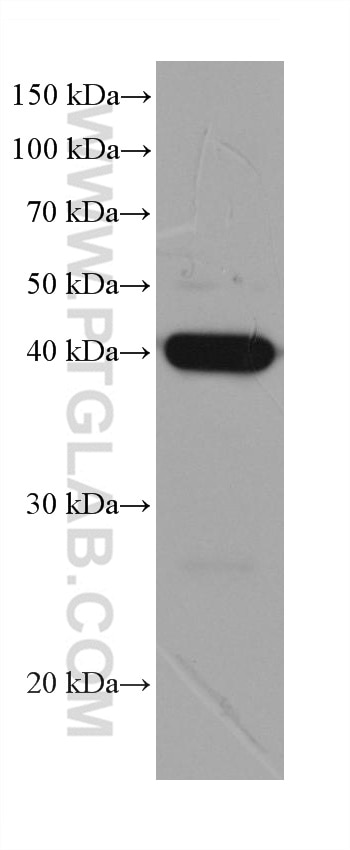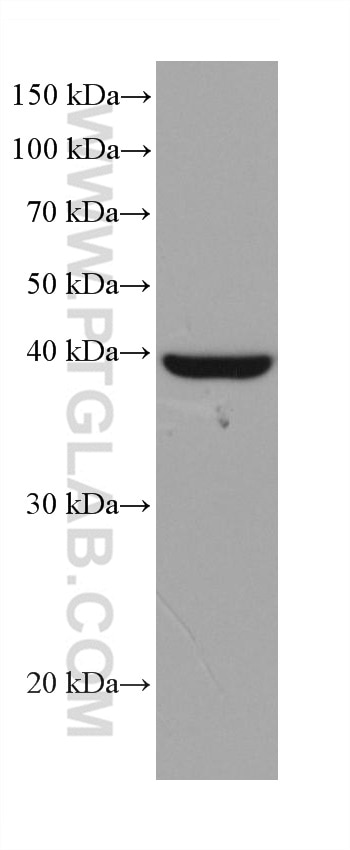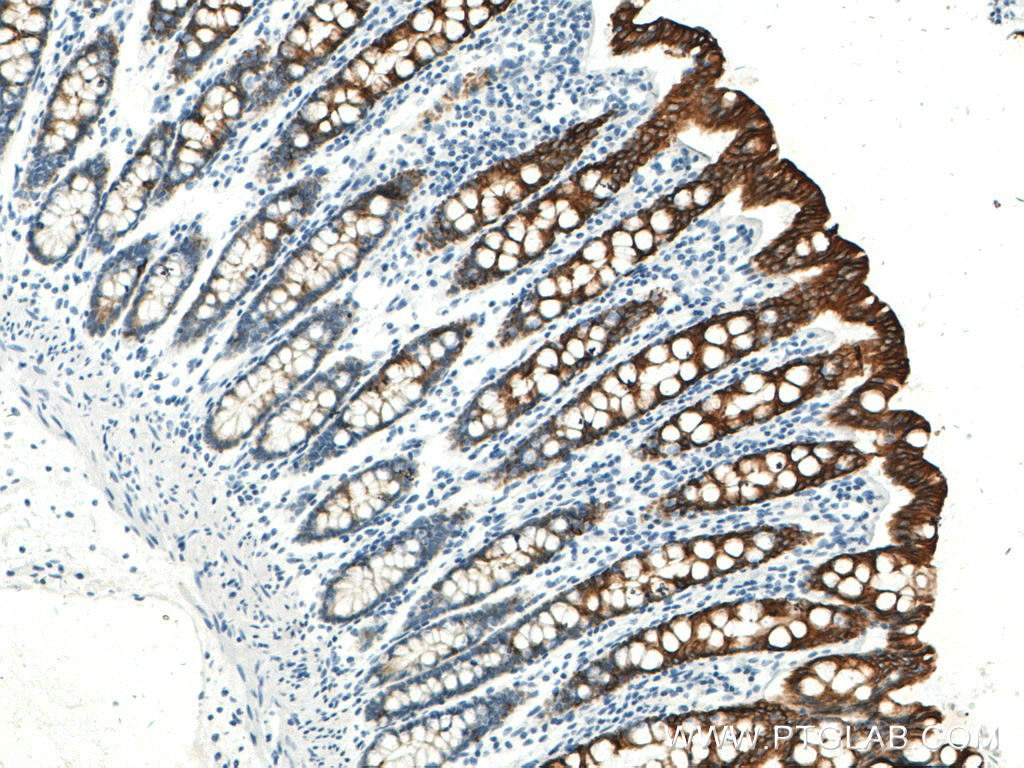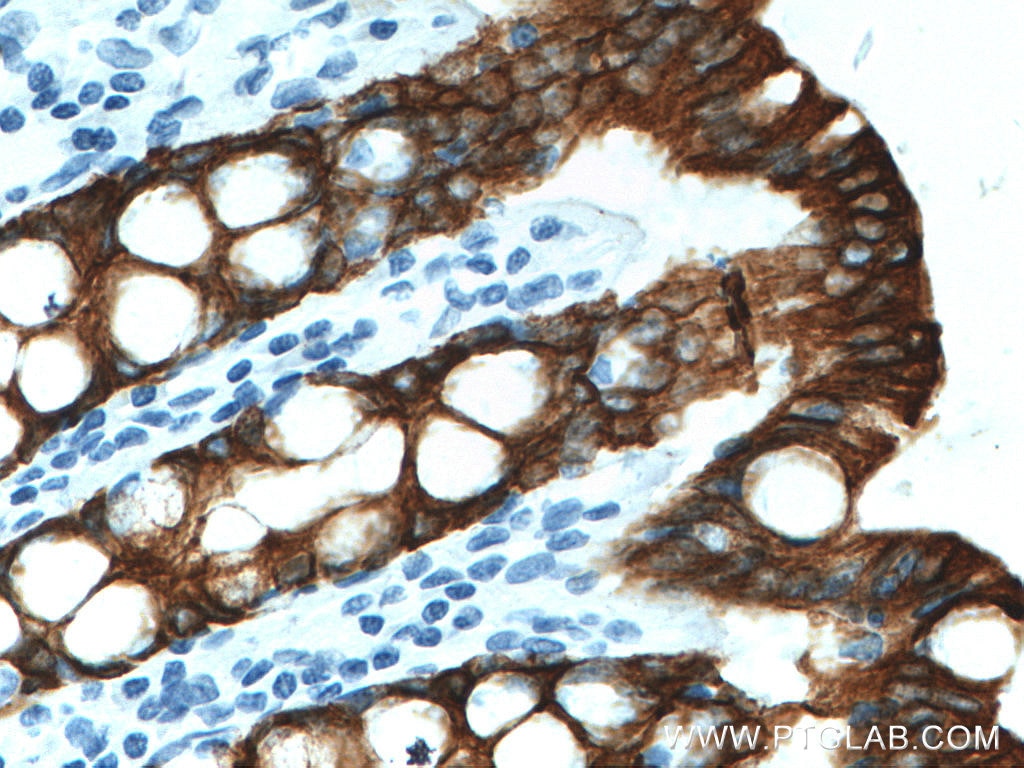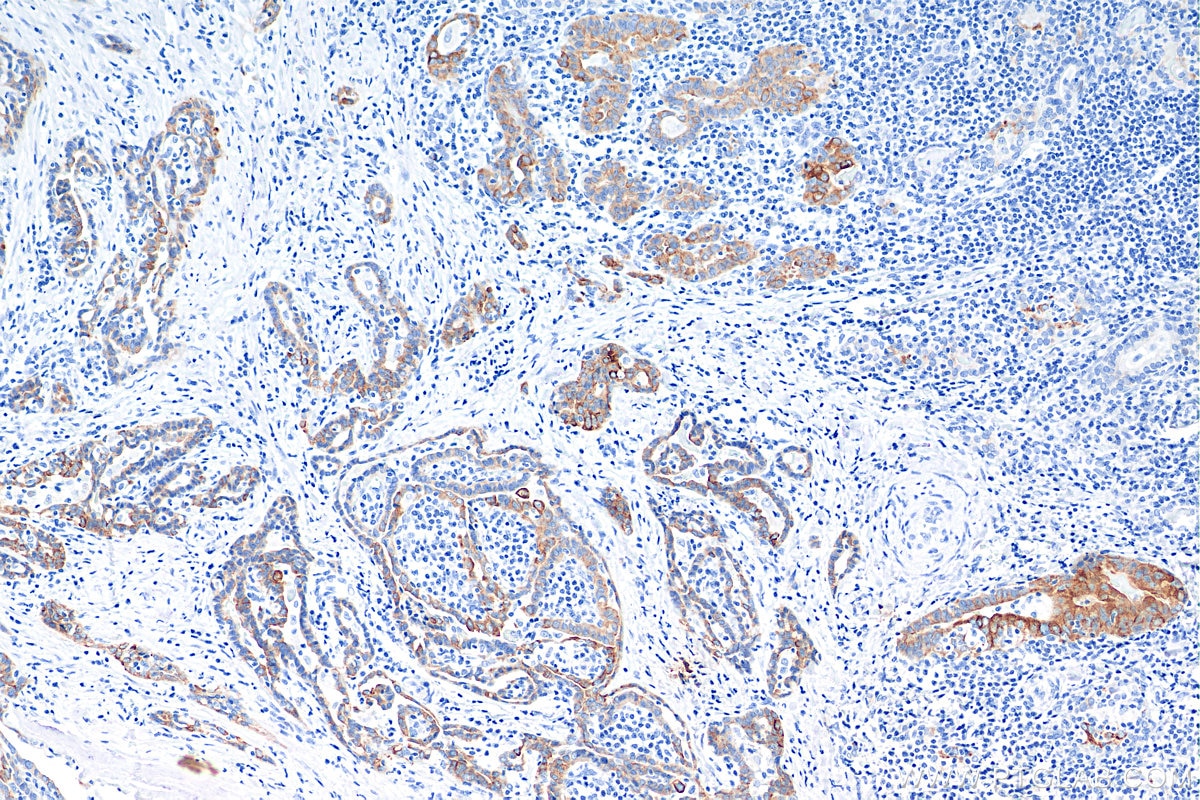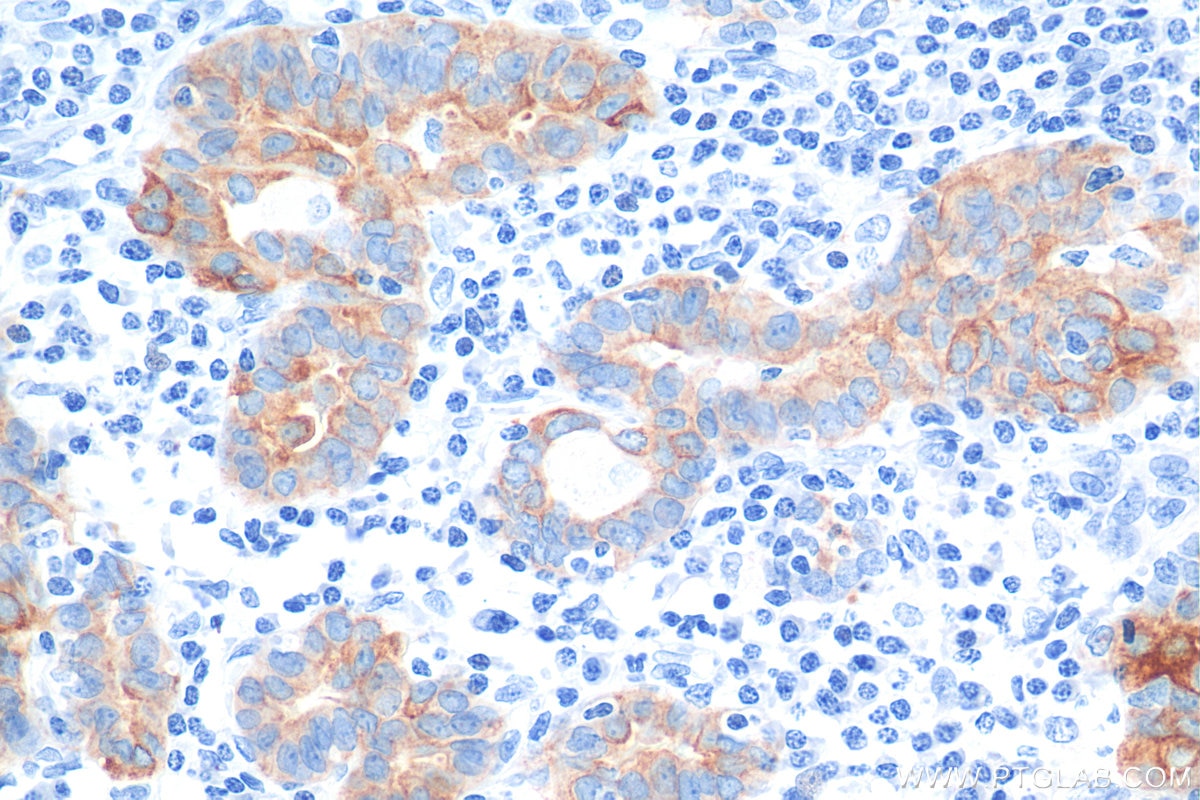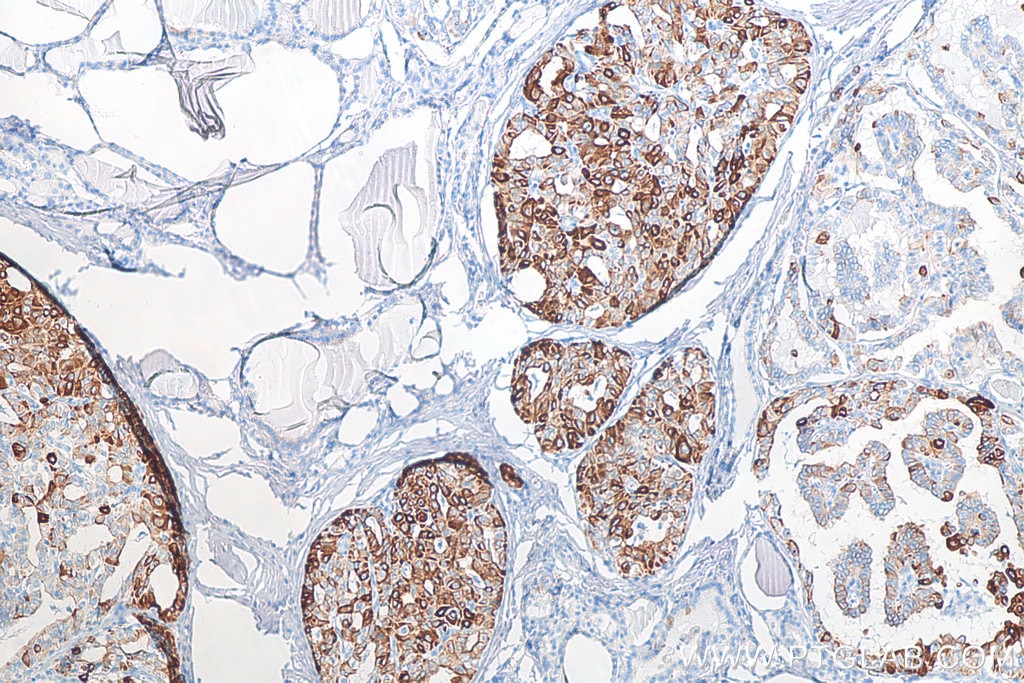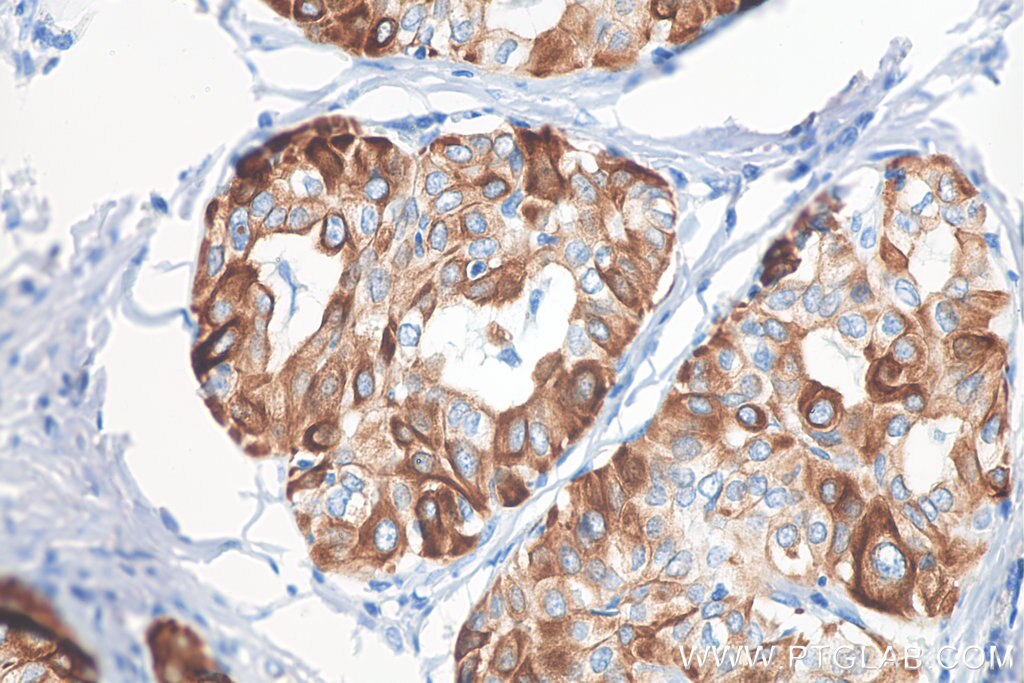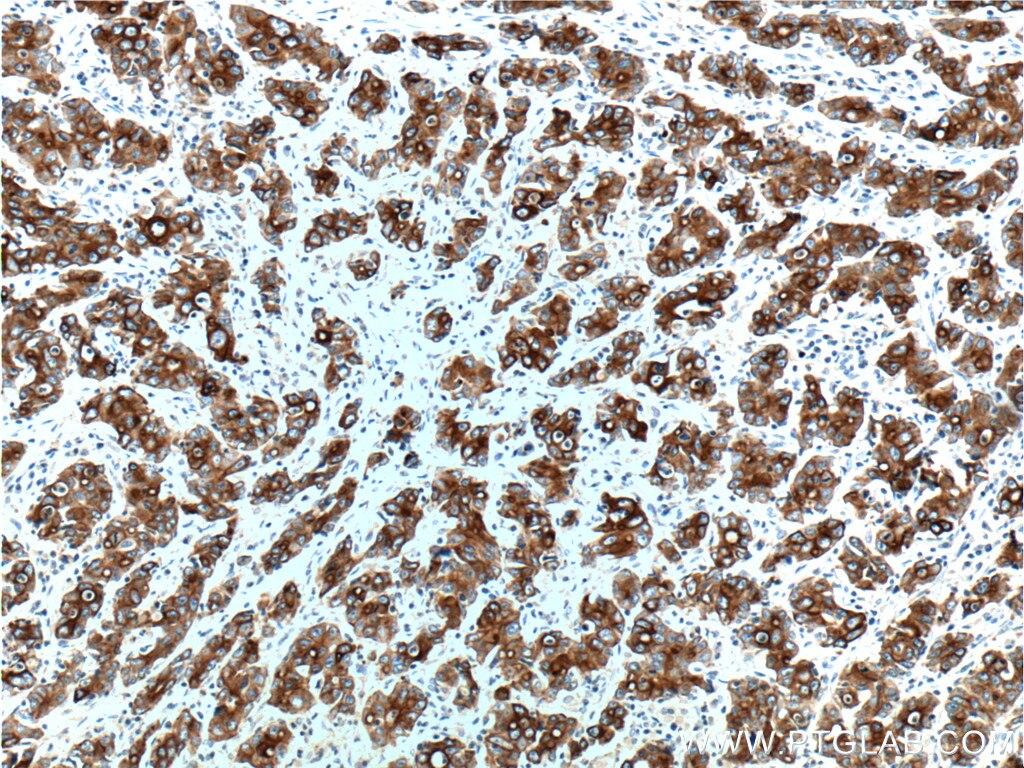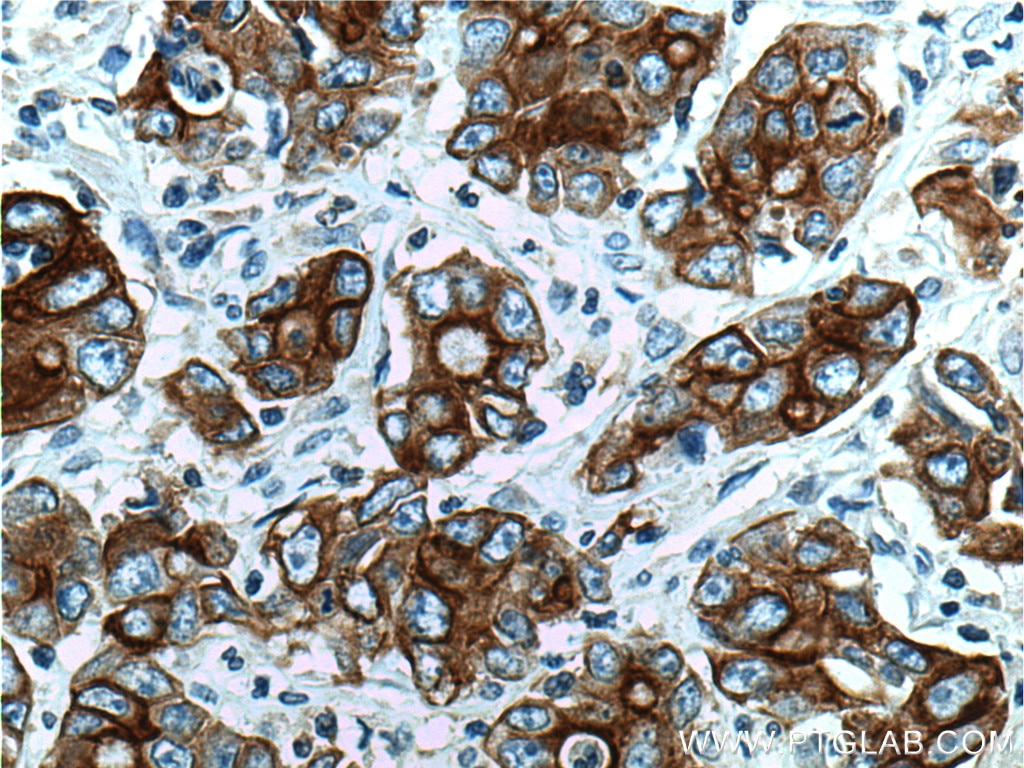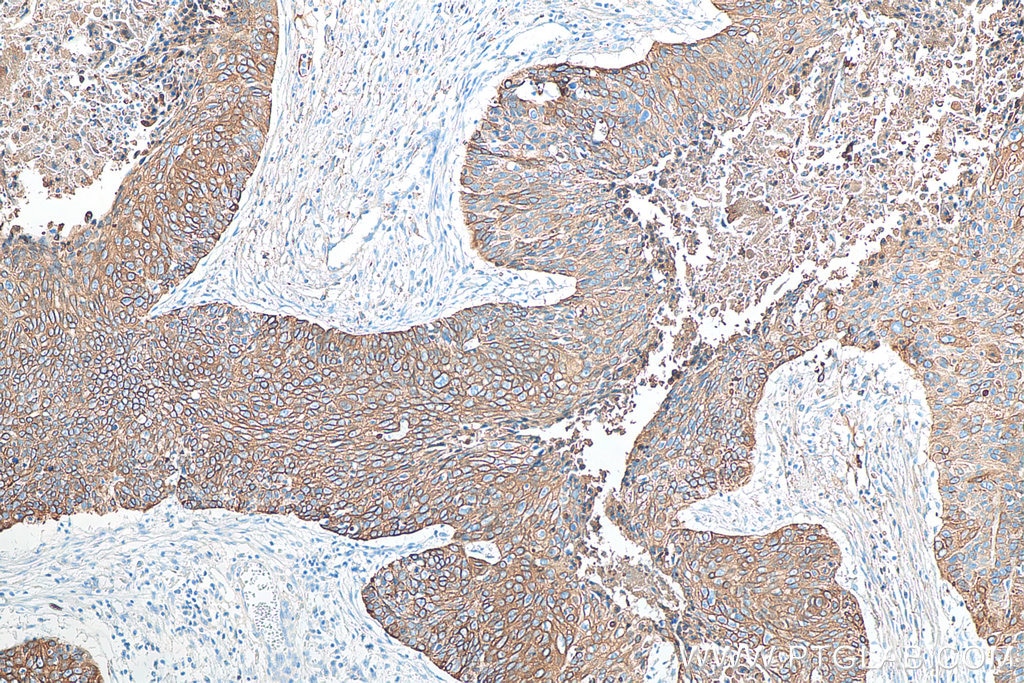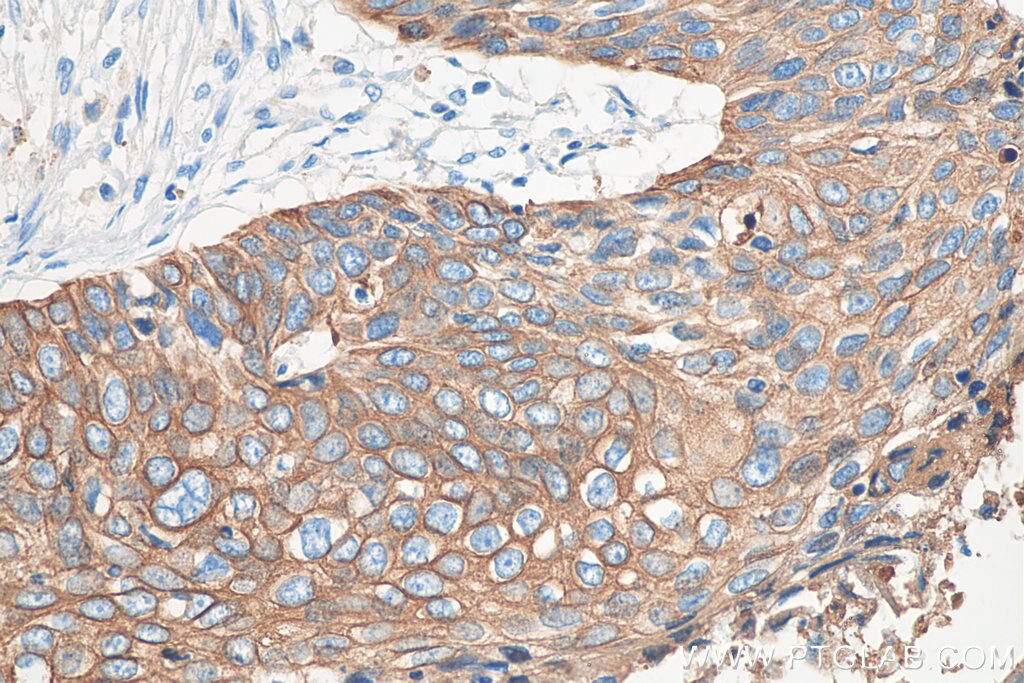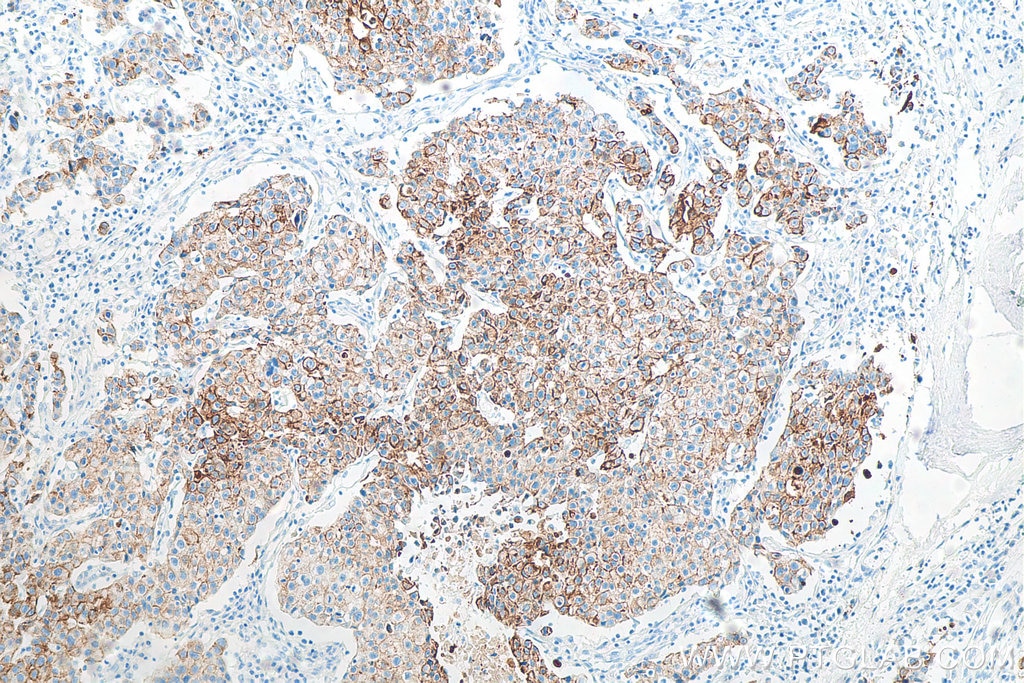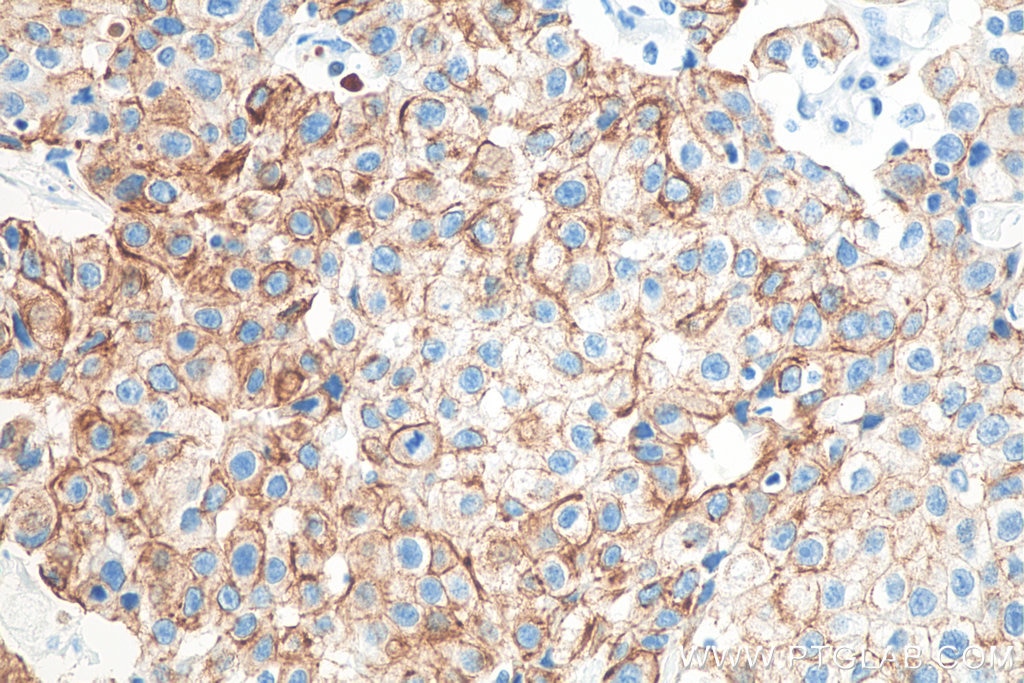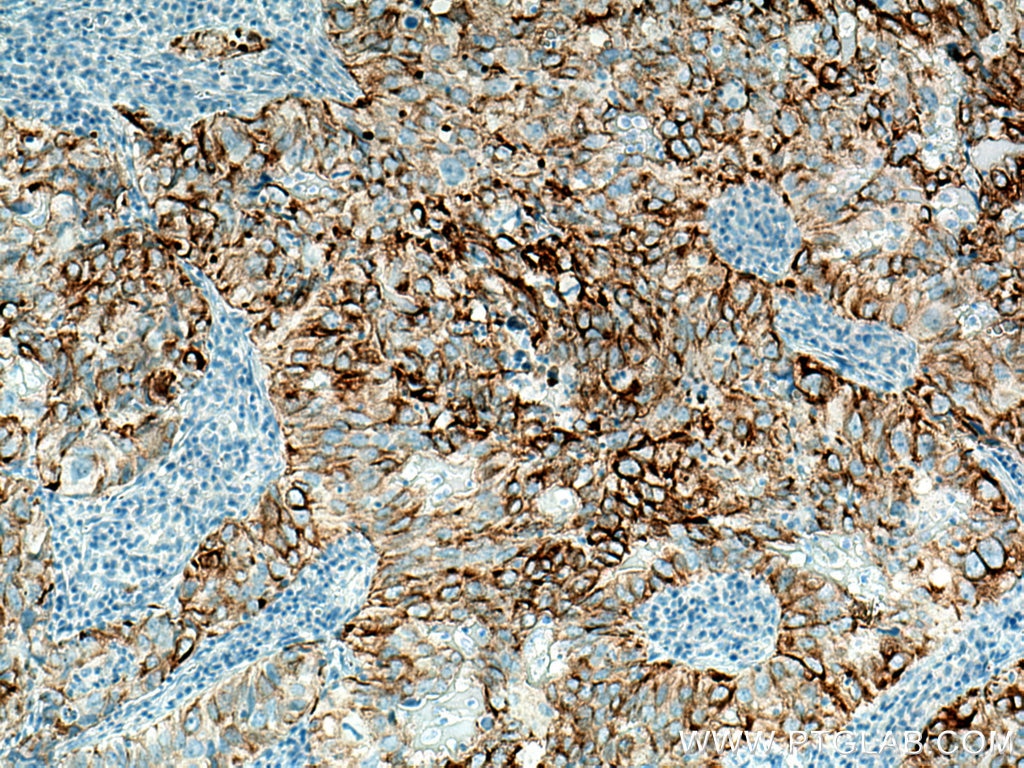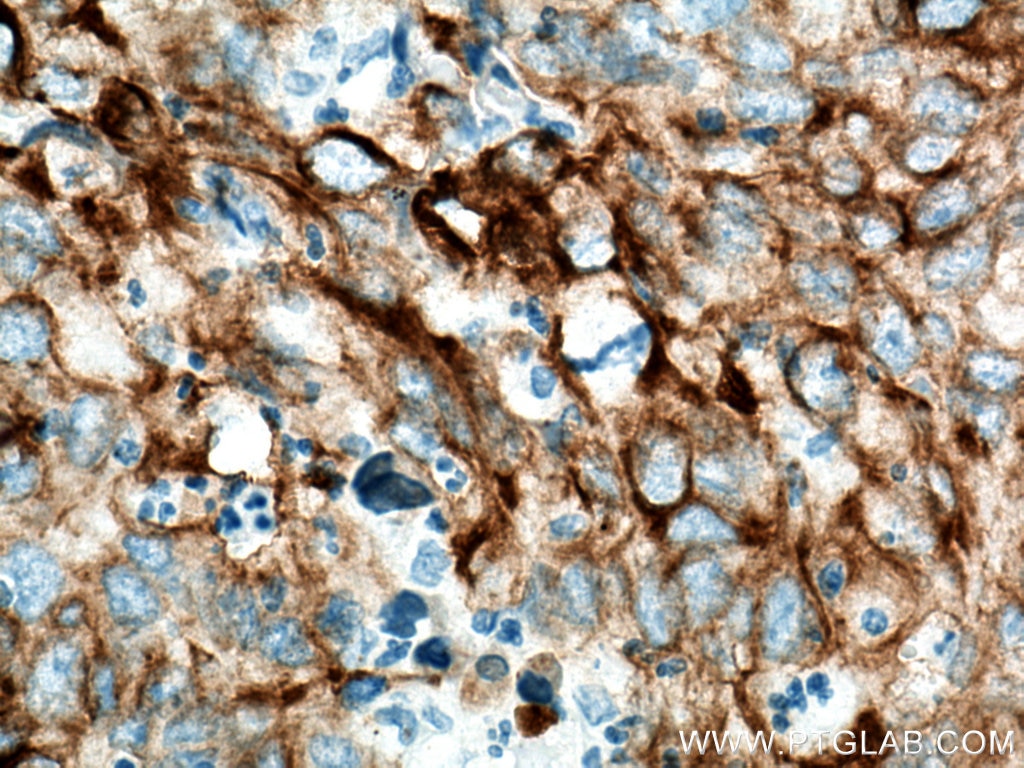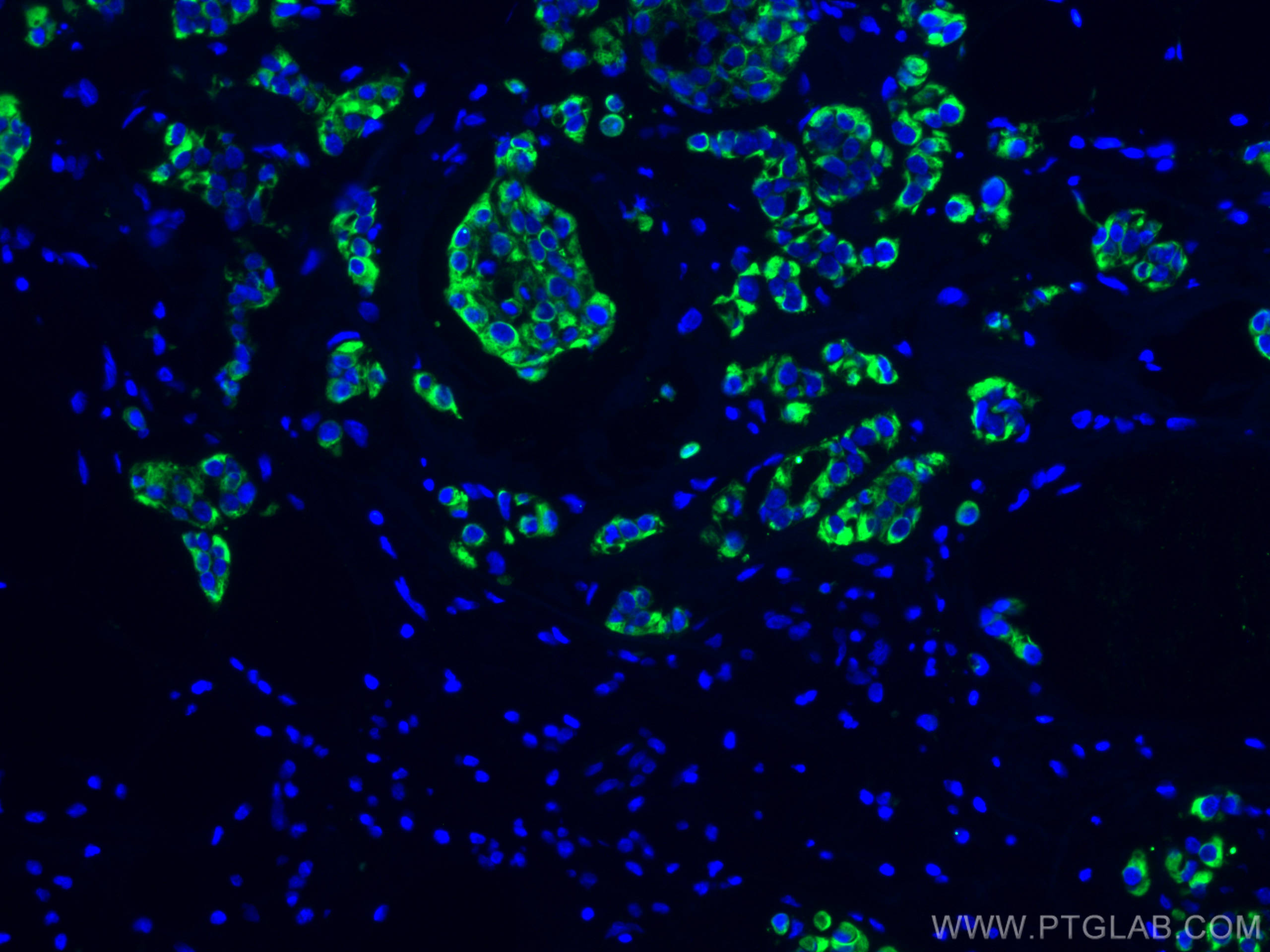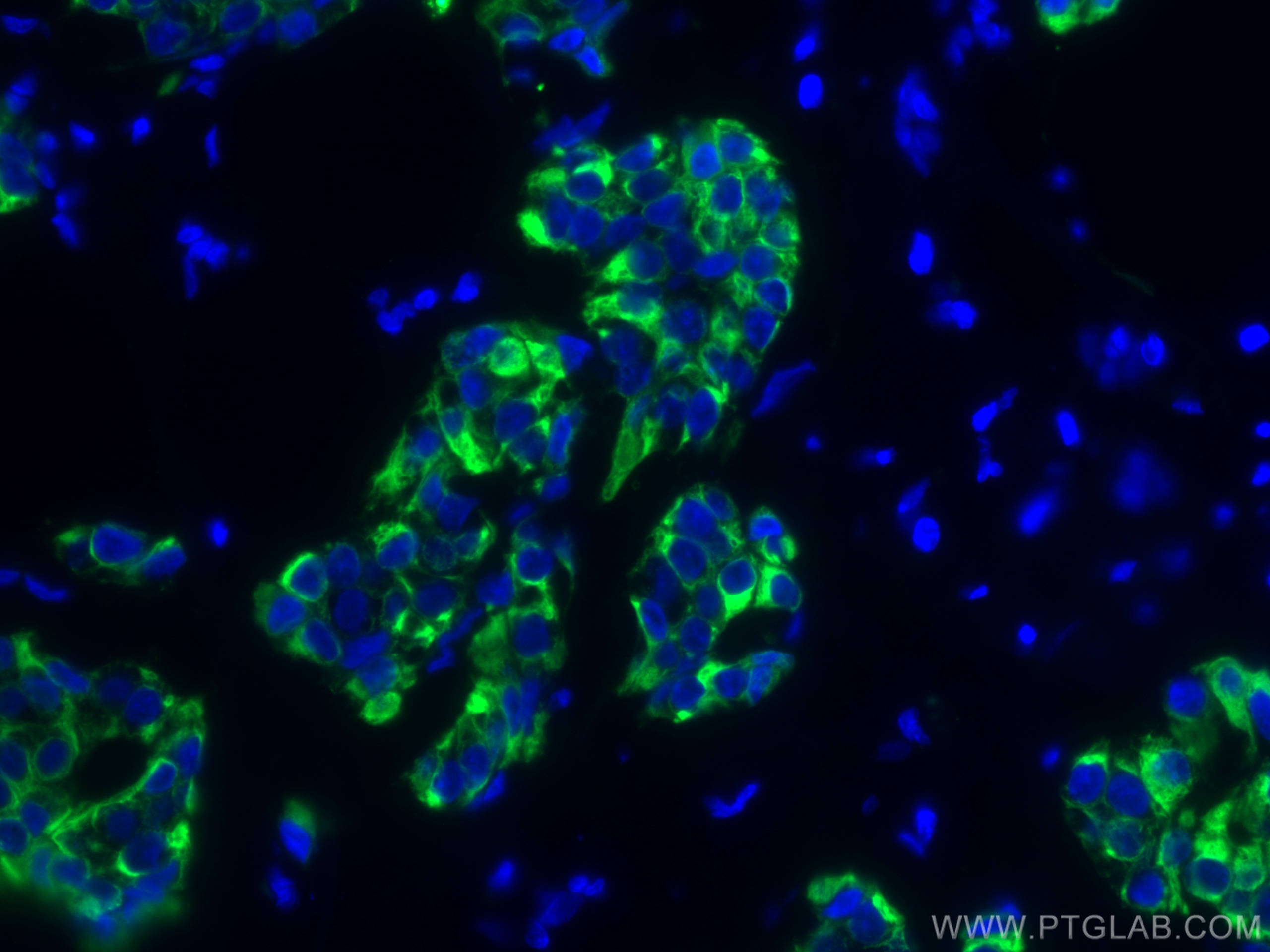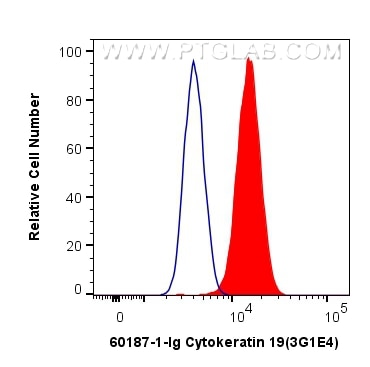- Phare
- Validé par KD/KO
Anticorps Monoclonal anti-Cytokeratin 19
Cytokeratin 19 Monoclonal Antibody for FC, IF, IHC, WB, ELISA
Hôte / Isotype
Mouse / IgG2b
Réactivité testée
Humain, porc, rat, souris
Applications
WB, IHC, IF, FC, ELISA
Conjugaison
Non conjugué
CloneNo.
3G1E4
N° de cat : 60187-1-Ig
Synonymes
Galerie de données de validation
Applications testées
| Résultats positifs en WB | cellules MCF-7, cellules HaCaT, cellules HeLa, cellules PC-3, cellules T-47D, tissu de côlon de porc, tissu de côlon de rat, tissu de côlon de souris |
| Résultats positifs en IHC | tissu de côlon humain, tissu de cancer de la thyroïde humain, tissu de cancer de l'estomac humain, tissu de cancer de l'œsophage humain, tissu de cancer du poumon humain, tissu de cancer du sein humain il est suggéré de démasquer l'antigène avec un tampon de TE buffer pH 9.0; (*) À défaut, 'le démasquage de l'antigène peut être 'effectué avec un tampon citrate pH 6,0. |
| Résultats positifs en IF | tissu de cancer du sein humain, |
| Résultats positifs en cytométrie | cellules HeLa, |
Dilution recommandée
| Application | Dilution |
|---|---|
| Western Blot (WB) | WB : 1:20000-1:100000 |
| Immunohistochimie (IHC) | IHC : 1:1000-1:51200 |
| Immunofluorescence (IF) | IF : 1:200-1:800 |
| Flow Cytometry (FC) | FC : 0.40 ug per 10^6 cells in a 100 µl suspension |
| It is recommended that this reagent should be titrated in each testing system to obtain optimal results. | |
| Sample-dependent, check data in validation data gallery | |
Applications publiées
| WB | See 2 publications below |
| IHC | See 1 publications below |
| IF | See 4 publications below |
Informations sur le produit
60187-1-Ig cible Cytokeratin 19 dans les applications de WB, IHC, IF, FC, ELISA et montre une réactivité avec des échantillons Humain, porc, rat, souris
| Réactivité | Humain, porc, rat, souris |
| Réactivité citée | Humain, souris |
| Hôte / Isotype | Mouse / IgG2b |
| Clonalité | Monoclonal |
| Type | Anticorps |
| Immunogène | Cytokeratin 19 Protéine recombinante Ag7407 |
| Nom complet | keratin 19 |
| Masse moléculaire calculée | 44 kDa |
| Poids moléculaire observé | 48 kDa |
| Numéro d’acquisition GenBank | BC002539 |
| Symbole du gène | KRT19 |
| Identification du gène (NCBI) | 3880 |
| Conjugaison | Non conjugué |
| Forme | Liquide |
| Méthode de purification | Purification par protéine A |
| Tampon de stockage | PBS avec azoture de sodium à 0,02 % et glycérol à 50 % pH 7,3 |
| Conditions de stockage | Stocker à -20°C. Stable pendant un an après l'expédition. L'aliquotage n'est pas nécessaire pour le stockage à -20oC Les 20ul contiennent 0,1% de BSA. |
Informations générales
The keratins are intermediate filament proteins responsible for the structural integrity of epithelial cells. KRT19, one of type I keratins, is specifically expressed in the periderm, the transiently superficial layer that envelopes the developing epidermis. Due to its high sensitivity, KRT19 is the most used marker for detection of tumor cells disseminated in lymph nodes, peripheral blood, and bone marrow of breast cancer patients.
Protocole
| Product Specific Protocols | |
|---|---|
| WB protocol for Cytokeratin 19 antibody 60187-1-Ig | Download protocol |
| IHC protocol for Cytokeratin 19 antibody 60187-1-Ig | Download protocol |
| IF protocol for Cytokeratin 19 antibody 60187-1-Ig | Download protocol |
| Standard Protocols | |
|---|---|
| Click here to view our Standard Protocols |
Publications
| Species | Application | Title |
|---|---|---|
Nat Commun Interventional hydrogel microsphere vaccine as an immune amplifier for activated antitumour immunity after ablation therapy | ||
Stem Cells Annexin A3 as a Potential Target for Immunotherapy of Liver Cancer Stem-Like Cells. | ||
Breast Cancer Res Single-cell RNA reveals a tumorigenic microenvironment in the interface zone of human breast tumors | ||
Biomed Pharmacother Serotonin-RhoA/ROCK axis promotes acinar-to-ductal metaplasia in caerulein-induced chronic pancreatitis. | ||
Biochim Biophys Acta Mol Basis Dis TGF-β/YB-1/Atg7 axis promotes the proliferation of hepatic progenitor cells and liver fibrogenesis | ||
Reprod Sci Identification of Key Differentially Methylated/Expressed Genes and Pathways for Ovarian Endometriosis by Bioinformatics Analysis |
